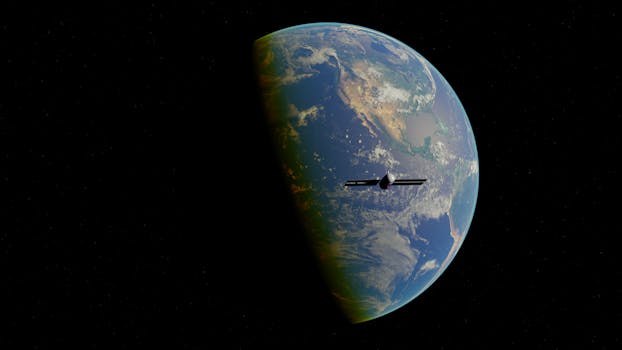
Eyes in the Sky: Advanced Technologies Transforming Earth Observation
Earth observation has become a vital component in understanding our planet’s complexities, from monitoring climate change to managing natural resources. The integration of advanced technologies has revolutionized this field, enabling unparalleled insights into our planet’s dynamics and fostering informed decision-making. Eyes in the Sky, referring to the sophisticated satellite systems and remote sensing technologies, are at the forefront of this transformation.
Introduction to Earth Observation
Earth observation involves the collection and analysis of data about the Earth’s physical and biological systems. This data is crucial for a wide range of applications, including environmental monitoring, agriculture, urban planning, disaster response, and climate change research. Over the years, the technology used for earth observation has evolved significantly, with satellites and remote sensing playing pivotal roles.
Advanced Technologies in Earth Observation
The advent of advanced technologies has significantly enhanced the capabilities of earth observation. High-resolution imaging sensors, hyperspectral and multispectral imaging, and synthetic aperture radar (SAR) are among the technologies that have improved the quality and variety of data collected. These technologies allow for detailed observations of the Earth’s surface, even under cloud cover or at night, and can provide insights into the chemical composition of the environment, which is invaluable for monitoring deforestation, pollution, and crop health.
Furthermore, the development of small satellite constellations has made earth observation more accessible and frequent. These constellations, comprising numerous small satellites, can provide daily imagery of any point on Earth, enabling real-time monitoring and rapid response to changes and emergencies. The use of artificial intelligence (AI) and machine learning (ML) in analyzing the vast amounts of data generated by these technologies has also become increasingly important, automating the process of identifying patterns, changes, and trends in the data.
Applications of Advanced Earth Observation Technologies
The applications of advanced earth observation technologies are diverse and impactful. In agriculture, these technologies are used for precision farming, allowing farmers to monitor crop health, detect early signs of disease or stress, and optimize irrigation and fertilizer application. In environmental monitoring, they help track deforestation, monitor water quality, and detect natural disasters such as wildfires and floods at an early stage.
In the realm of climate change research, earth observation data is crucial for understanding global warming patterns, sea-level rise, and the melting of polar ice caps. It also aids in managing urban development by providing detailed maps of cities, which can be used for planning, infrastructure development, and emergency response. Additionally, these technologies play a critical role in disaster response and recovery, offering vital information on the extent of damage and the needs of affected populations.
Conclusion
In conclusion, the integration of advanced technologies into earth observation has opened new avenues for understanding and managing our planet. As these technologies continue to evolve, we can expect even more precise and comprehensive insights into the Earth’s systems. The role of satellites and remote sensing technologies as ‘Eyes in the Sky’ will only grow in importance, serving as a cornerstone for sustainable development, environmental conservation, and humanitarian response. The future of earth observation holds much promise, with potential advancements in quantum computing, further miniaturization of satellite technology, and the integration of the Internet of Things (IoT) expected to enhance our observational capabilities even further.